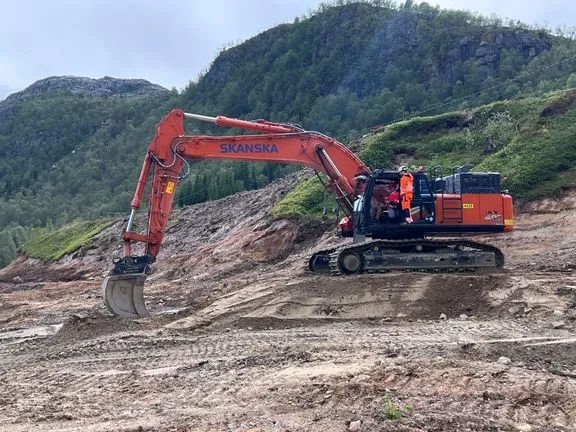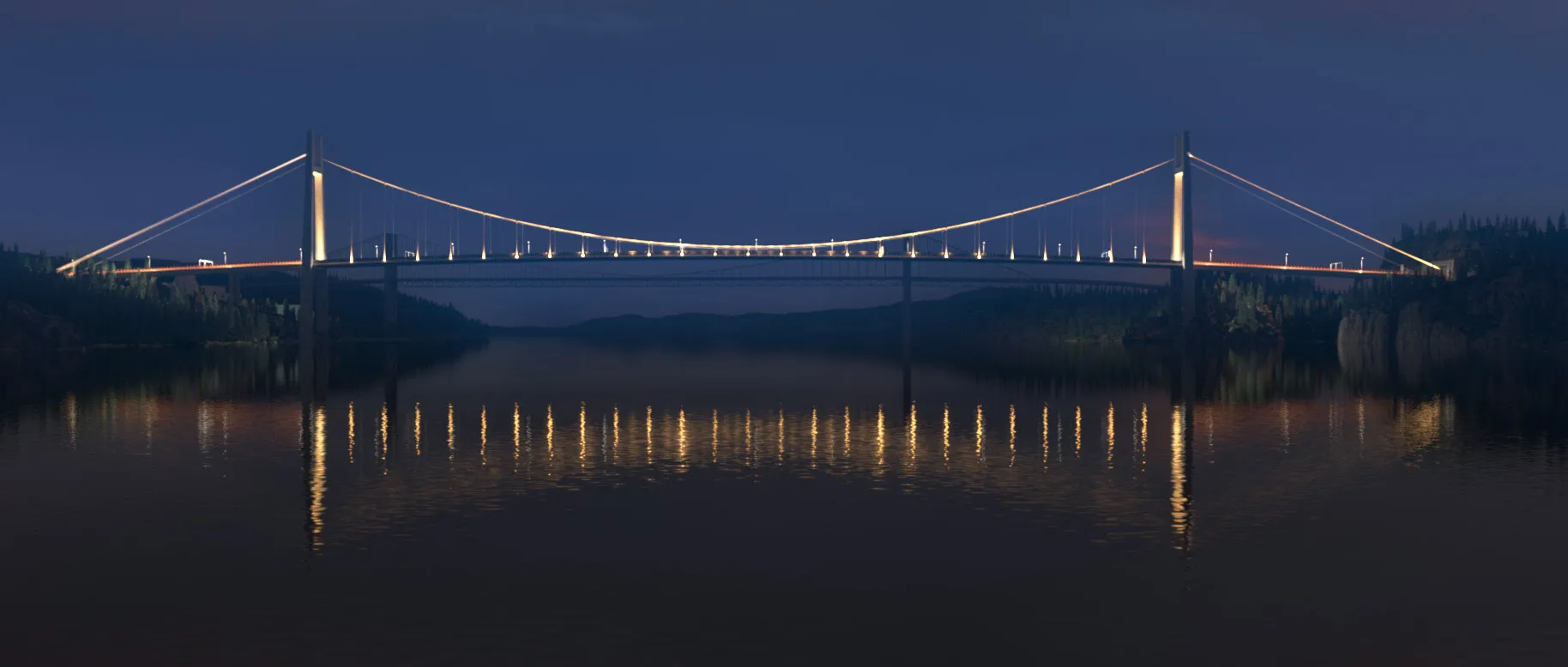
Construction of Norway’s largest transport project, the E10 Tjeldsund-Gullesfjordbotn-Langvassbukt road, officially got underway this month, according to Statens vegvesen, the country’s national road agency.
Near Fiskefjord in the Tjeldsund municipality, transport minister Jon-Ivar Nygård took the controls of an excavator in a ceremonial start to the project that is part of European Route E10. But actual construction had started in March 2023 through early works agreements and is scheduled to be fully completed in December 2028. Also at the ceremony was says Stein Ivar Hellestad, chief executive of Skanska Norge.
The E10 is an important road westward to Lofoten and Vesterålen from the main E6 road. The PPP project will upgrade the road standards and shorten the E10 from Tjeldsund Bridge to Gullesfjordbotn by around 30km to cut the travel time on the entire section by 39 minutes. E10 is designed to strengthen the links between Lofoten, Vesterålen Harstad/Narvik Airport and the E6, supporting the integration of the wider region.
Skanska Norge, through the company’s special purpose company Hålogalandsvegen, and its subcontractors, will maintain and operate the road until November 2043, after which it will be handed over the Statens vegvesen.
Norwegian global consulting engineering and architectural firm Multiconsult, together with Aas-Jakobsen and ViaNova as subconsultants, is the main designer for Skanska. Financial consultancy PwC’s Norway business advised on the appointment of Skanska to build the E10 Tjeldsund-Gullesfjordbotn-Langvassbukt road which will connect the Lofoten Islands to the mainland.
Earlier this year, the Nordic Investment Bank signed agreed a loan to co-finance the 21-year public-private partnership between the Statens vegvesen (Norwegian Public Road Administration) and Hålogalandsvegen. Skanska will finance, build, maintain and operate a section of the E10 Hålogalandsvegen and Highway 85 Tjeldsund–Gullesfjordbotn–Langvassbukt north of the Arctic Circle.
In a statement, the bank noted that the €86 million loan covers construction of 82km of new and upgraded road, seven rock tunnels with a total length of 27km and several bridges with lengths ranging from 20m to 200m. The project will also include pedestrian and cycle routes and general improvements to local public transport facilities, laybys, rest areas and access roads.







